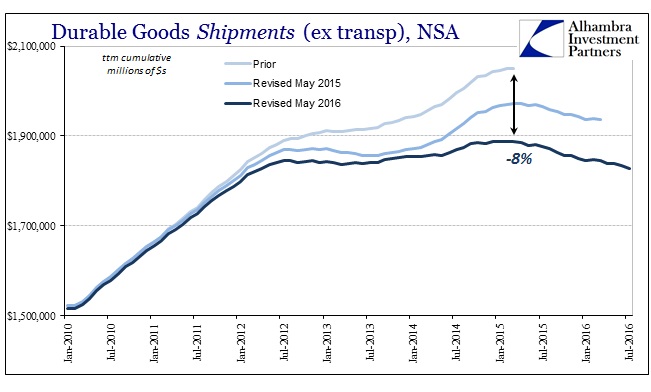Today’s durable goods report was uniformly ugly, if not borderline atrocious. The view from especially capital goods, the vital investment that the US economy sorely needs to snap out of its slump, is that spring is definitely over. Contraction accelerated in almost every corner, with durable goods shipments (ex transportation), for example, falling by almost 4% year-over-year, the worst month since last October.
That is not the view being presented, however, as the media is saying that durable goods were entirely positive because the monthly seasonally-adjusted number was up sharply. Same planet, different world. From the Wall Street Journal:
Demand for long-lasting factory goods rebounded in July, a sign the manufacturing sector could continue to stabilize in the second half of the year.
New orders for durable goods fell 3.1% in July 2016 from July 2015, which was already 2% less than July 2014. In other words, new orders for goods that are a relatively reasonable proxy for consumer spending and confidence are 6.4% below what they were two years ago, but we are supposed to believe that there is a rebound and stabilization afoot? The most egregious use of nothing but the narrow monthly gain was for capital goods.
Back-to-back months of rising orders in this category are “an encouraging sign that business capital investment activity might be on the verge of a long-awaited rebound,” said Millan Mulraine, deputy chief U.S. macro strategist at TD Securities USA LLC.
“The sharp rise in core orders and modest gain in inventories to start the quarter suggest that business investment will likely provide a modest boost to the economic recovery,” he said.
You truly have to wonder if anyone checks anything other than the headline. Capital goods not only were worse, they became so in truly alarming fashion. New orders for capital goods (non-defense, ex aircraft) dropped 7.1% in July, the biggest decline since September and the third worst month since late 2009. Capital goods shipments collapsed, falling 9.5% in this latest month, by far the worst of the post-crisis period.
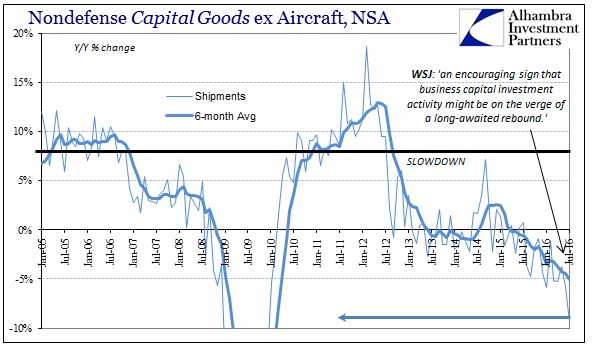
I understand the shorthand that is used in the monthly seasonally-adjusted estimates, but this is well beyond the typical discrepancy. To be fair, the Journal article quoted above does qualify these comments by stating the obvious, that monthly numbers are volatile and some economists caution not to read too much into them. All that aside, the article is framed to be the most charitable to the optimistic case – the headline even mentions durable goods “jumping 4.4%.” There is no mention about the view of especially capital goods unadjusted. If nothing else, let the readers decide which they find to be more compelling and appropriate rather than present a highly arguable position which isn’t supported at all by the wider context of the full data release.

And so it is with the rest of the report. There is nothing positive about any of the unadjusted yearly comparisons, just more of the same in terms of contraction but also the growing sense of seasonality (rebounding contraction, if you like). Everything still points down and at an increasing rate as summer heats up.
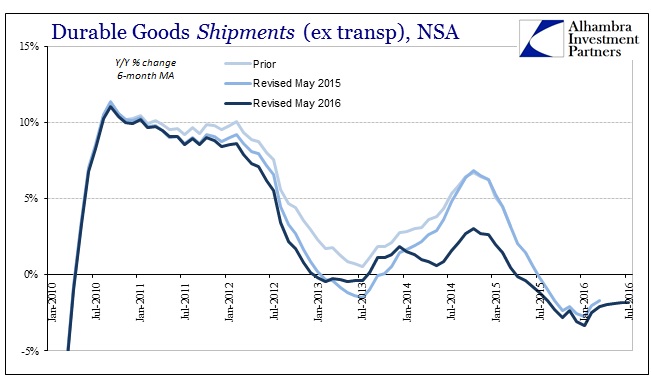
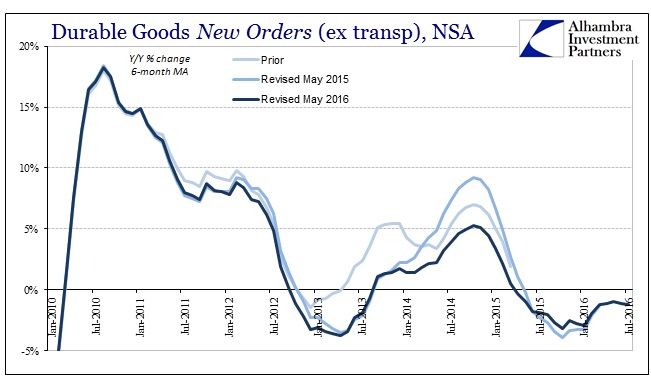
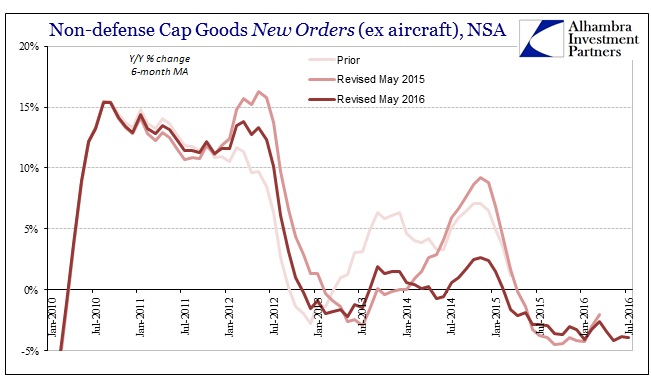
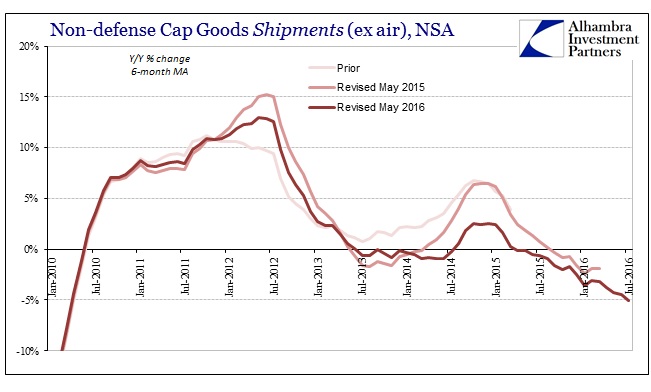
Low calculated inflation simply doesn’t factor here because both orders and shipments are and remain on the wrong side of zero. The only relevance of inflation is that what we see in manufacturing overall, durable goods being one part, coinciding with what we find in lack of monetary success in bringing about these intended outcomes. The view of durable goods is nothing like the unemployment rate because that rate is misleading. Factoring all labor, however, and how the lack of full-scale growth in the economy is causing great distortions dispels any notions of rebounds that are predicated upon believing in the economy that “should” be.
In other words, economists still cling to the idea that monetary policy works and so they filter all data through that predetermined conclusion. Every single uptick, no matter how slight or, as in this case, refuted is highlighted with vigor as if the final appearance of the recovery and sustained growth. I could include example after example of the many prior declarations of this very thing but by now you are as likely sick reading of them as I am in resurfacing them. What none of them ever account for is how there were so many rebounds claimed in the past two years (if not four) yet overall we are significantly, seriously lower today in almost every economic account than through all those claimed rebounds. Two years in contraction and still going; four years in stagnation and malaise.
Full employment just doesn’t figure; it’s an obvious ruse or else the economy would be much different and economists wouldn’t be groping from NIRP to more QE to now 4% inflation targets.

